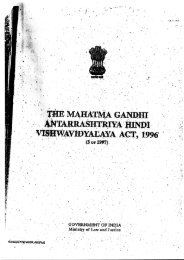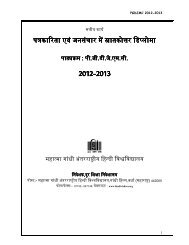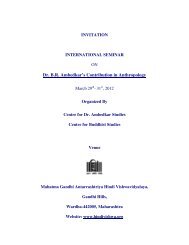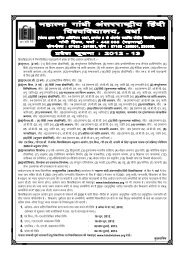Mamta Kalia
Mamta Kalia
Mamta Kalia
You also want an ePaper? Increase the reach of your titles
YUMPU automatically turns print PDFs into web optimized ePapers that Google loves.
the popularity of song and dance. 5<br />
This also explains why cinema became<br />
a victim of purging in the hands of radical<br />
Islamists in 1978-79.<br />
Finally, a quick look at the<br />
representations of Iranian women in prerevolutionary<br />
cinema becomes necessary<br />
to understand why gendering became<br />
a powerful instrument of making films<br />
that were in line with the guidelines<br />
evolved by the revolutionary government<br />
in Tehran. Like their counterparts<br />
elsewhere in the world, Iranian<br />
filmmakers began to play up the<br />
traditional woman against the modern.<br />
There were some who satirized her while<br />
others exploited her. In film after film,<br />
Esmat Delkash, a popular actor of the<br />
50s and 60s, played the fallen (modern)<br />
woman, who depended on her body for<br />
surviving in a society dominated by lusty<br />
men. The image of the fallen-woman (party<br />
girl/prostitute/cabaret dancer) was in<br />
striking contrast to that of the innocent<br />
girl who was represented as the dutiful<br />
wife and mother. The fallen-woman not<br />
only provided voyeuristic material to<br />
spectators “but also reinforced the sense<br />
of female vulnerability in the face of<br />
male power and aggression. 6 Perhaps it<br />
was on account of such developments,<br />
that the restoration of traditional<br />
womanhood became a major priority of<br />
the new patriarchal state after the<br />
revolution.<br />
The 1960s through the 70s witnessed<br />
dramatic developments in what has been<br />
130 :: April-June 2010<br />
called the march of the Iranian film<br />
industry towards documentary realism.<br />
Three filmmakers who took the lead in<br />
this direction included Dairush Mehrjui<br />
(Gaw), Massoud Kimiai’s (Qeyser) and<br />
Nasir Taqvaie (Aramish Jolu-i-Deegran).<br />
Their efforts paved the way for the birth<br />
of a new genre – the Iranian New Wave<br />
or the Iranian Art film. In fact both<br />
Gaw and Qeyser were screened after<br />
throwing a challenge to Iran’s censorship<br />
laws. 7 As Safawi and Dehlvi have<br />
remarked, “the purposeful drift of ideas,<br />
the subtle transportation of mundane<br />
human existence to the experience of<br />
an inner self, the simplicity of portrayal,<br />
the hidden voice of protest all combined<br />
together to put these films together in<br />
a complete genre from Film Farsi”. 8 The<br />
New Wave movement also attracted the<br />
attention of Iranian intellectuals such<br />
as Furugh-e-Farrukhzad, Gholam Hussain<br />
Saedi and Dairush Mehrjui, who began<br />
to write regular columns about cinema.<br />
Though still far from being seen as a<br />
global phenomenon, the new Iranian<br />
cinema also caught the attention of<br />
European and American audiences. Some<br />
Iranian directors came to be recognized<br />
as auteurs during this period. Abbas<br />
Kiarastomi won the Palme d’Or at Cannes<br />
in 1997 (for his film A Taste of Cherry)<br />
and was compared to Jean Luc Godard,<br />
Kurosawa and Ray.<br />
The Islamic Revolution of 1978<br />
completely transformed the way in which<br />
Iranian cinema came to be made and<br />
viewed domestically and abroad. In the

















